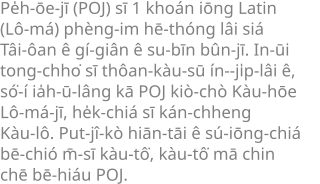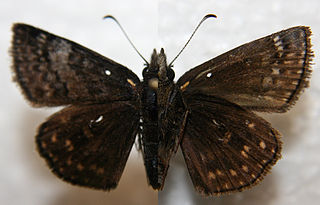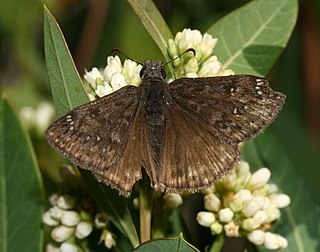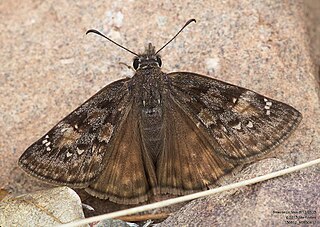
Taiwan, officially the Republic of China (ROC), is a country in East Asia. The main island of Taiwan, also known as Formosa, lies between the East and South China Seas in the northwestern Pacific Ocean, with the People's Republic of China (PRC) to the northwest, Japan to the northeast, and the Philippines to the south. It has an area of 35,808 square kilometres, with mountain ranges dominating the eastern two-thirds and plains in the western third, where its highly urbanized population is concentrated. The combined territories under ROC control consist of 168 islands in total covering 36,193 square kilometres. The largest metropolitan area is formed by Taipei, New Taipei City, and Keelung. With around 23.9 million inhabitants, Taiwan is among the most densely populated countries.

Taiwan, officially the Republic of China (ROC), is an island country in East Asia. The island of Taiwan, formerly known as Formosa, makes up 99% of the land area of the territories under ROC control. The main island is 35,808 square kilometres (13,826 sq mi) and lies some 180 kilometres (112 mi) across the Taiwan Strait from the southeastern coast of the People's Republic of China (PRC). The East China Sea lies to the north of the island, the Philippine Sea to its east, the Luzon Strait directly to its south and the South China Sea to its southwest. The ROC also controls a number of smaller islands, including the Penghu archipelago in the Taiwan Strait, the Kinmen and Matsu Islands in Fuchien near the PRC's coast, and some of the South China Sea Islands.

The Taiwan Strait is a 180-kilometer -wide strait separating the island of Taiwan and the Asian continent. The strait is part of the South China Sea and connects to the East China Sea to the north. The narrowest part is 130 km wide.

The dingy skipper is a species of butterfly in the family Hesperiidae.

Pe̍h-ōe-jī, sometimes known as Church Romanization, is an orthography used to write variants of Hokkien Southern Min, particularly Taiwanese and Amoy Hokkien, and it is widely employed as one of the writing systems for Southern Min. During its peak, it had hundreds of thousands of readers.

Erynnis is a genus in the skippers butterfly family Hesperiidae, known as the duskywings. Erynnis is found in the Neotropical realm and across the Palearctic, but the highest species diversity is in the Nearctic. The genus was erected by Franz von Paula Schrank in 1801.

Mongolian beef is a dish from Taiwan consisting of sliced beef, typically flank steak, usually made with onions. The beef is commonly paired with scallions or mixed vegetables and is often not spicy. The dish is often served over steamed rice, or in the US, over crispy fried cellophane noodles. It is a staple dish of American Chinese restaurants. Despite its name, the dish has nothing to do with Mongolian cuisine.

The Ministry of Education (MOE) is the ministry of Taiwan responsible for incorporating educational policies and managing public schools and it oversees the educational administrative agencies of local governments.

East Asia is a geographical and cultural region of Asia including the countries of China, Japan, Mongolia, North Korea, South Korea, and Taiwan. Additionally, Hong Kong and Macau are the two special administrative regions of China. The economies of China, Japan, South Korea, and Taiwan are among the world's largest and most prosperous. East Asia borders North Asia to the north, Southeast Asia to the south, South Asia to the southwest, and Central Asia to the west. To its east is the Pacific Ocean.

Erynnis brizo, the sleepy duskywing or banded oak duskywing, is a species of Hesperiidae butterfly that occurs throughout North America and is commonly confused with E. juvenalis and E. lucilius. The species is listed as threatened in Connecticut and Maine.

Erynnis persius, commonly known as Persius duskywing, is a species of butterfly in the family Hesperiidae that occurs in North America. The eastern subspecies Erynnis persius persius is rarer and protected by law in some regions.

Erynnis horatius, commonly known as Horace's duskywing, is a species of butterfly in the family Hesperiidae. It is found in the United States from Massachusetts to Florida, and west to eastern South Dakota, the Gulf Coast, south-eastern Utah, Colorado, north-eastern Arizona, and New Mexico. It is listed as a species of special concern in the US state of Connecticut.

The official romanization system for Taiwanese Hokkien in Taiwan is known as Tâi-uân Tâi-gí Lô-má-jī Phing-im Hong-àn often shortened to Tâi-lô. It is derived from Pe̍h-ōe-jī and since 2006 has been one of the phonetic notation systems officially promoted by Taiwan's Ministry of Education. The system is used in the MoE's Dictionary of Frequently-Used Taiwan Minnan. It is nearly identical to Pe̍h-ōe-jī, apart from: using ts tsh instead of ch chh, using u instead of o in vowel combinations such as oa and oe, using i instead of e in eng and ek, using oo instead of o͘, and using nn instead of ⁿ.

Erynnis propertius, commonly known as Propertius duskywing, is a species of butterfly in the family Hesperiidae. It is found in along the west coast of North America from southern British Columbia south along the Pacific Slope to Baja California Norte. It is one of the most commonly seen skippers in California.

Magnolia × alba, also known as the white champaca, white sandalwood, or white jade orchid tree, is a flowering plant of hybrid origin that is commonly cultivated in Southeast Asia and tropical regions of East Asia. Although the exact origin is uncertain, it is considered to be a hybrid of Magnolia champaca and Magnolia montana.

Pueraria montana var. lobata, the East Asian arrowroot, or kudzu vine, is a perennial plant in the family Fabaceae.

Erynnis telemachus, the Rocky Mountain duskywing, is a species of spread-wing skipper in the butterfly family Hesperiidae. It is found in North America.

Erynnis meridianus, the meridian duskywing, is a species of spread-wing skipper in the butterfly family Hesperiidae. It is found in Central America and North America.

Erynnis tristis, commonly known as the mournful duskywing, is a species of spread-wing skipper in the butterfly family Hesperiidae. It is found in Central America, North America, and South America. It is mottled brown with a white fringe on the hind wings. It appears similar to the funereal duskywing, but the mournful duskywing is more likely to appear in urban areas. The larva feeds on young oaks while adults nectar from a variety of wild and garden flowers.



















